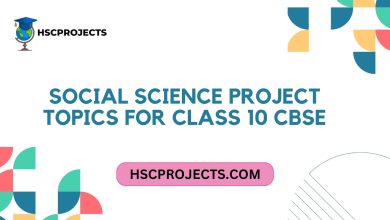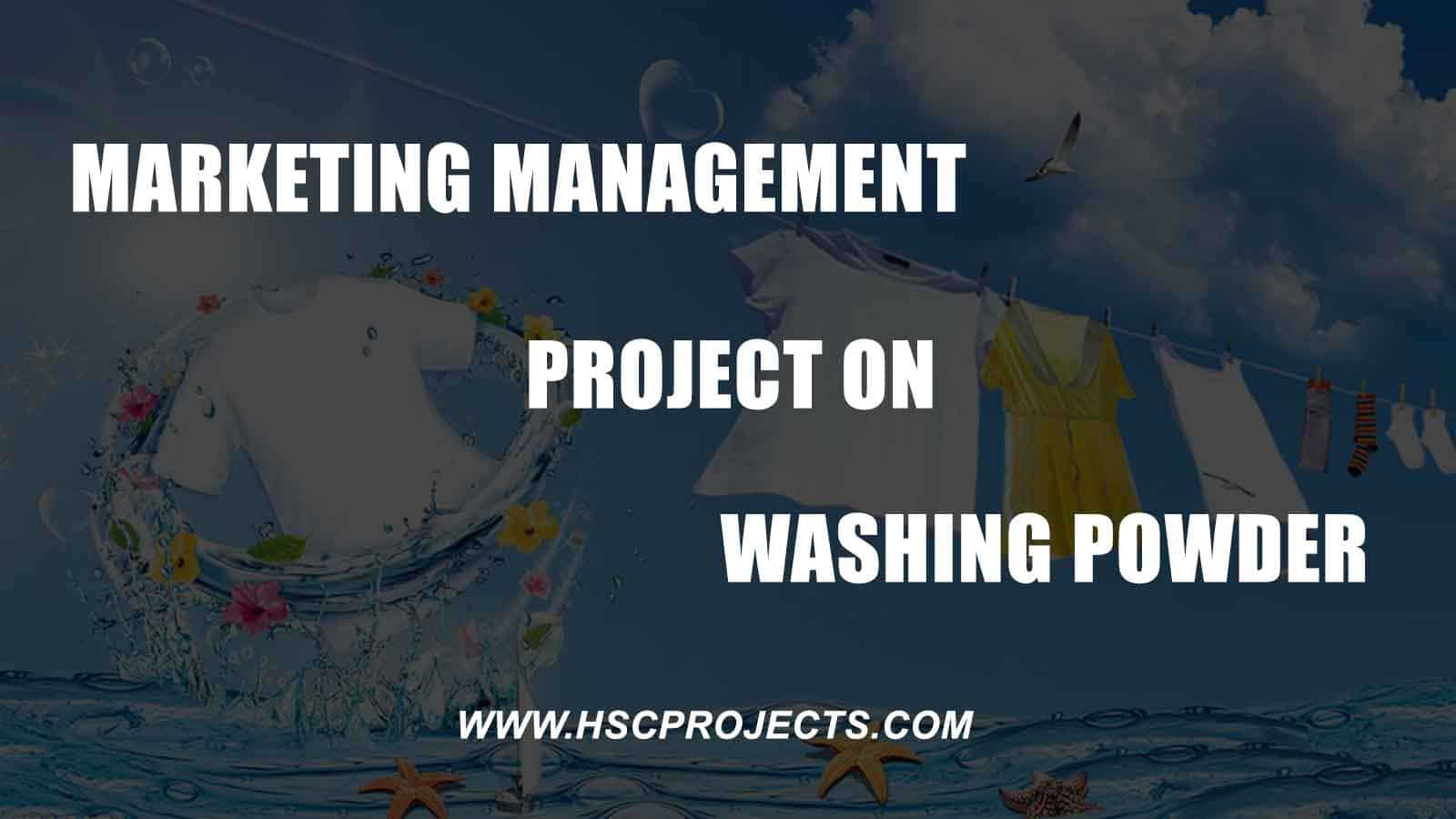
Marketing Management – Washing Powder
INTRODUCTION:
A detergent is a surfactant or a mixture of surfactants with cleaning properties in dilute solution. These substances are usually a family of compounds that are similar soap but are more soluble in hard water because the polar sulfonate is less likely than the polar carboxylate to bind to calcium and other ions found in hard water. In most household contexts, the term detergent by itself refers specifically to laundry detergent or dish detergent as opposed to hand soap or other types of cleaning agents. Detergents are commonly available as powders or concentrated solutions. Detergents like soaps work because they are partly polar and partly non-polar. We will learn about the marketing management of washing powder.
MARKETING MANAGEMENT:
Marketing Management is the directing of an organization’s resources to develop and implement the best possible strategy in order to reach its desired consumer segment with the goal of maximizing sales of a particular product or service.
MARKETING CONCEPTS:
Production Concept:
The production concept is used when the demand for a product is higher than the supply. The philosophy here is “Supply creates its demand.” Therefore, the focus is on manufacturing more product to make sure it’s widely available.
Product Concept:
Contrary to the production concept, this concept assumes consumers value products of a higher quality as opposed to price and availability. Therefore, the focus is more on quality and less on quantity. The idea of the product concept is that if you are selling a product of great quality.
Selling Concept:
Where the production and product concepts focus on manufacturing, the selling concept focuses on the making of an actual sale. The number one focus for the manager is to make money, no matter the quality, needs of the consumer, supply, or demand. The selling concept entails very aggressive marketing.
Marketing Concept:
The marketing concept works on the philosophy that consumers buy products that fulfill their needs. A manager that takes the marketing approach will conduct extensive market research to determine the needs of consumers and how to fulfill them better than its competitions.
Societal Concept:
Marketing managers with this approach are also concerned about the well-being of society and feel a responsibility to tend to the world around them. The societal concept creates a balance of social and environmental welfare, customer relationships and sales. The main objective is to focus on the welfare of the people.
4 P’S OF MARKETING:
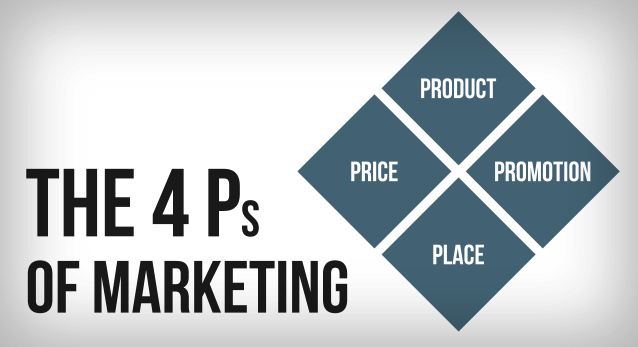
Product:
The product is either a tangible good or an intangible service that seems to meet a specific customer need or demand. All products follow a logical product life cycle and it is vital for marketers to understand and plan for the various stages and their unique challenges. It is key to understand these problems that the product is attempting to solve.
Price:
Price covers the actual amount the end-user is expected to pay for the product. This is linked to what the perceived value of the product is to the customer rather than an object costing of the product on offer. If a product is priced higher or lower than its perceived value, that it will not sell. This is why it is imperative to understand how a customer sees what you are selling.
Promotion:
The marketing communication strategies and techniques all fall under the promotion heading. These may include advertising, sales promotion, special offers and public relations. Whatever the channel used, it is necessary for it to be suitable for the product, the price, and the end-user it is being marketed to. It is important to differentiate is just the communication aspect of the marketing function.
Place:
Place or placement has to do with how the product will be provided by the customer. Distribution is a key element of placement. The placement strategy will help assess what channel is the most suited to a product. How a product is accused by the end user also needs to compliment the rest.
CHEMICAL CLASSIFICATION:
Detergents are classified into three broad categories, depending upon the electrical change of surfactant.
- Anionic Detergents.
- Cationic Detergents.
- Non-iconic and Zwitterion Detergents.
COMPETITORS:
-
Tide:

The household chore of doing the laundry began to change with the introduction of washing powders in the 1880s. These new laundry products were pulverized soap. New cleaning product marketing successes, such as the 1890s introduction of the NK Fairbank Company’s Gold Dust washing powder (which used a breakthrough hydrogenation process in its formulation) and Hudson’s heavily advertised product, Rinso proved that there was a ready market for better cleaning agents. Henkel & Cie’s self-activating (or self-bleaching) cleaner.
Tagline – White hai to Tide hai.
USP – Provides good whitening and fragrance at a low price.
-
Surf Excel:
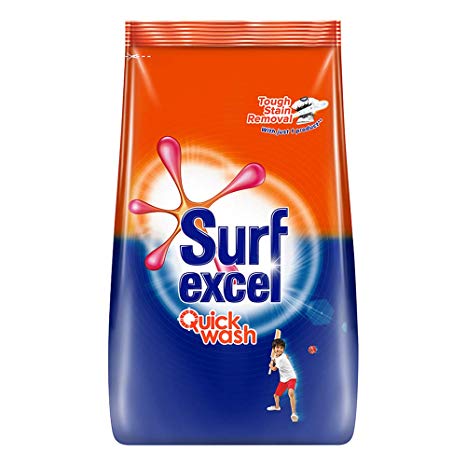
Surf Excel is a Unilever brand marketed as the counterpart brand of OMO detergent in India, Pakistan, Bangladesh, and Sri Lanka markets.
The Surf brand was the first detergent powder introduced in Pakistan (1948) and India (1959). Initially, Surf was positioned on the clean proposition of “Washes Whitest”. However, with the emergence of numerous local detergent manufacturers and the entry of other global brands, Surf underwent various changes in its brand communication and was replaced by Surf Excel in 1996. This is in line with the Unilever Global Communication Platform.
Tagline – Dirt is good, Surf Excel hai na.
USP – Surf Excel offers outstanding stain removal ability on a wide range.
-
Ariel:
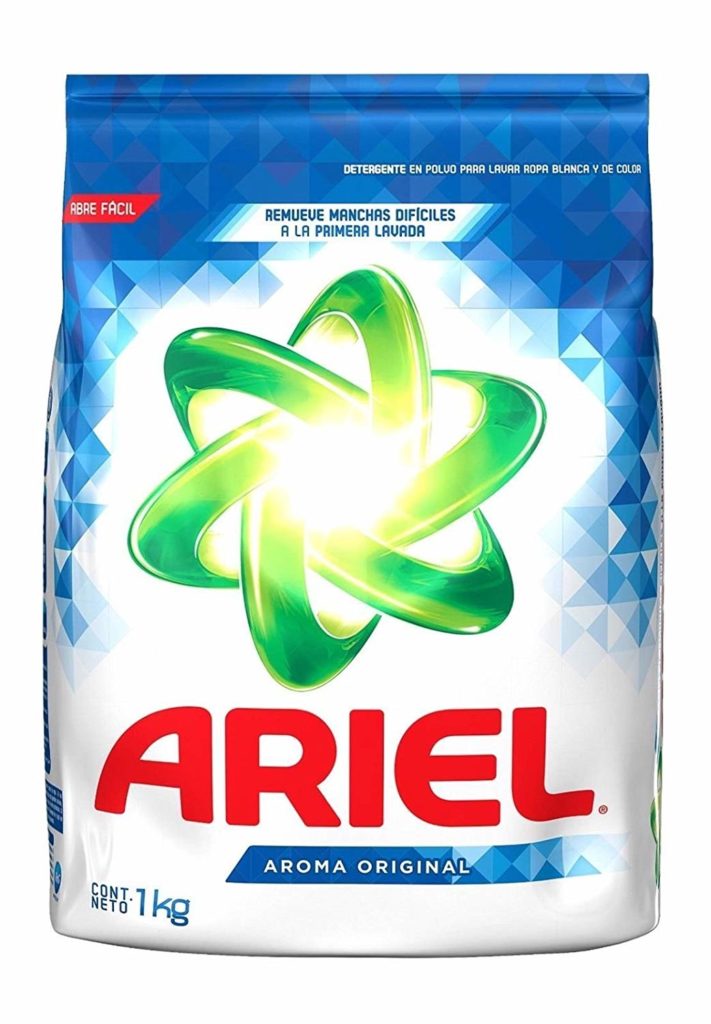
Ariel is a marketing line of laundry detergents made by Procter and Gamble. It is the flagship brand in Procter and Gamble’s European, Algerian, Turkish, Indian, Pakistani, Japanese, Filipino, Mexican, Brazilian, Chilean, Peruvian. In some US stores, Ariel is available. Additionally, Ariel is also known as Dynamo in Malaysia and Singapore.
Tagline – Sirf yaadein taaza rakhe, daag nahi.
USP – The product has been in the market for many decades and has established its image as the product which can remove district and difficult to remove stains.
-
RIN:
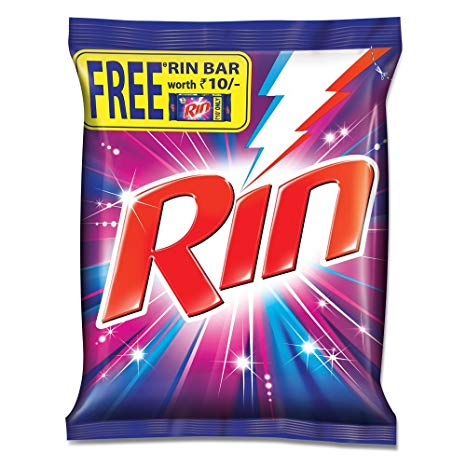
Rin detergent powder was launched in 1994. This was the first product extension from the iconic brand that stood for whiteness in the laundry. We further introduced Rin Refresh with the fragrance of lemon and rose that penetrates every fiber to give the same brightness and freshness to boost confidence all day. In 2016, we also added Rin Antibacterial Powder to one portfolio of clothes, also kills 99.9% gems.
Tagline – Dugni Safedi, Dugni Chamak.
USP – Rin strives to deliver the best in class whiteners through continuous innovation and product improvements supported by memorable campaigns.
-
Wheel:
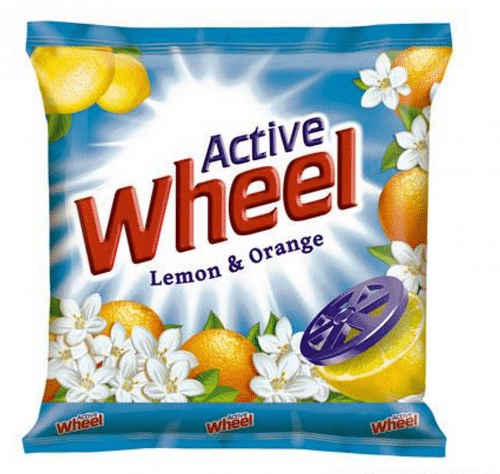
The wheel is a brand of laundry detergent manufactured by Hindustan. This product was created specifically by Hindustan Unilever to Counter Nirma, the lower cost detergent, which had taken the ground away from Surf, the top-selling detergent at that time from Hindustan Unilever. Salman Khan, a Bollywood Superstar, endorsed it. It was introduced in 1987.
Tagline – Nimbu ki Shakti aur hazaro phoolo ki khushboo, mehangi wali dhulai ab budget mein samayi.
USP – Transforming even as tedious a chore as laundry into a delightful experience.
COMPETITIVE PRICES:
Prices of the competitions in the market, for 1 kg packet:
- Rin – ₹15
- Wheel – ₹50
- Surf Excel – ₹190
- Ariel – ₹192
- Tide – ₹98
WHY WASHING POWDER?
Washing Powders are cleaning products that have become an essential part of our daily lives. Cleaning products play an essential part in our daily lives. Cleaning products play an essential role by safely and effectively removing dirt, germs and other contaminants and thus promote a hygienic lifestyle.
I have selected this product because:
- It is a basic necessity good.
- Used everywhere.
- A good quality powder is essential in the market to save the quality of clothes.
- It holds a good market share.
MY PRODUCT:
Name Pearl Washing Powder.
Tagline: Cleanliness is power.
USP: Natural Powder fragrance and smooth texture to keep the quality of clothes intact.
Logo:
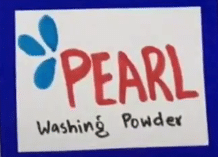
MORE ABOUT MY PRODUCT:
Features:
- It has a smooth texture.
- Only real flower fragrances.
- It doesn’t cause harm to hands.
- Cloth friendly.
- Its attractions packaging makes the customers tempted towards trying it.
Available in:
- Small trial pouches – 10gm.
- 100gm
- 500gm
- 1kg
- 5kg
LABELING:
Display of information about a product on its container, packaging or the product itself is known as labeling. For several types of consumer and industrial products, the type and extent of information that must be imported by a label are governed by the relevant safety and shipping laws.
- The Right Material
- Colors that POP
- Great Graphics
- Readable, Eye-Catching Fonts
- Super Shape
- Fabulous Finish
SWOT ANALYSIS:

Swot analysis is an analysis framework used to evaluate a company’s competitive position and stands for strengths, weaknesses, opportunities, and threats. It is a tool that identifies and strengths, weaknesses, opportunities, and threats of a business.
- Strengths describe what an organization from performing at its optimum level.
- Weakness stops an organization from performing at its optimum level. They are areas where the business needs to improve to remain competitive.
- Opportunities refer to favorable external factors that an organization can use to give it a competitive advantage.
- Threats refer to factors that have the potential to harm an organization.
BRANDING:
The process involved in creating a unique name and image for a product in the consumer’s mind, mainly through advertising campaigns with a consistent theme.
- Branding aims to establish a significant and differentiated presence in the market that attracts and retains loyal consumers.
- Branding promotes recognition.
- A brand sets us apart from the competition.
- Strong branding generates referrals.
- Branding sets expectations.
- A strong brand adds value.
GRADING:
Grading is the process of sorting individual units of a product into well-defined classes or grades of quality. The goods are grader or sorted out into different lots in accordance with the specified standards. The established standards lay down the sorted part. In the case of manufactured goods, goods can be of uniform quality. But agricultural products like fruits and vegetables, etc. vary in quality. Therefore, classes and grades of quality are set and different units of the product are sorted into the established standard grads. Thus, grading involves the division of products into classes made up of units possessing similar characteristics of size and quality. And standardization refers to the process of setting up basic measures or standards to which the products must conform and taking steps to adhere to these standards.
PACKAGING:
Packaging refers to the process of designing the package such as containers, wrappers, etc. It plays a very significant role in the marketing success or failure of money products, especially for non-durable consumer products.
Level of Packaging:
- Primary Packaging: It refers to the product’s immediate package. In certain cases, such packages are retained until the consumer is ready to use the product.
- Secondary Packaging: It is the additional packaging to a product to protect it. Such packaging is retained until the consumer wants to start using the product.
- Transportation Packaging: It refers to packages essential for storing, identifying and transporting.
CHANNELS OF DISTRIBUTION:
A distribution channel is a chain of business of intermediaries through which a good or service passes until it reaches the end consumer. It can include wholesalers, retailers, distributors and even the internet itself. Channels are broken into direct and indirect forms. With a ‘Direct’ Channel allowing the consumer to buy goods from a wholesaler or retailer.
The first channel is the longest in that. It includes all four from producer to the end consumer. The wine and adult beverage industry is a perfect example of the long distribution channel. It operates in what is known as the three-tier system, meaning the winery is required by law to first sell its product to a wholesaler, who then sells to a retailer. The retailer, in turn, sells the product to the end consumer.
The second channel is one where the producer sells directly to a retailer, who then sells the producer’s product to the end consumer. This means the second channel contains only one intermediary.
The third and final channel is direct to consumer model where the producer sells its products directly to the end consumer.
PROMOTIONAL SCHEMES:
- A supersaver pack of 1KG.
- Free washing brush with 500g pack.
- Free Bucket with a 5kg pack.
- Gift coupons and value points for discounts.
- Female celebrity endorsement.
- Free sample of 10g for initial promotion.
SOCIAL MESSAGE:
- We will use the original flower fragrances to manufacture our product for the benefit of society.
- An adequate percentage of our profit will be donated to physically disabled people.
- The packaging will be made of recycled paper instead of plastic.
- Every year some of our washing powder pouches/packs will be distributed in orphanages/old age homes for free.
WAREHOUSING AND TRANSPORTATION:
Warehousing:

It is the key component of the overall business supply chain. The supply chain consists of the facilities and distribution options of the procurement of materials from manufacturers to consumers and all points in between. It includes the production of materials into components and finished products and then the distribution to consumers.
Transportation:

Weekly orders would be dispatched for local retailers and shop owners form the centralized distribution center. While monthly stock would be updated at the centralized stock center. Depending upon the location, quantity, and availability, the mode of transportation would be selected.
CONCLUSION:
From this marketing research, I have understood the marketing mix. I have learned to take the decisions regarding the 4P’s of marketing and the following things too:
- Gathering information and analyzing the market.
- How to design a product.
- Branding, Labelling, and Packaging of a product.
- Pricing a product.
- Marketing and promotion of a product.
BIBLIOGRAPHY:
- Family
- Friends
- Internet:
- http://www.hul.co.in/brands/home-care/rin.html
- http://www.google.co.in/search?
- http://en.wikipedia.org/wiki/Detergent
- http://en.Indiamart.com/mpcat/washingpower.html
- CBSE
- Books
CERTIFICATE:
This is to certify that the present project report is the outcome of my own efforts and my indebtedness to other works/publications has been duly acknowledged at the relevant places. It had not been submitted in part or full for any other Diploma Degree of any University.
DOWNLOAD PDF OF THE PROJECT
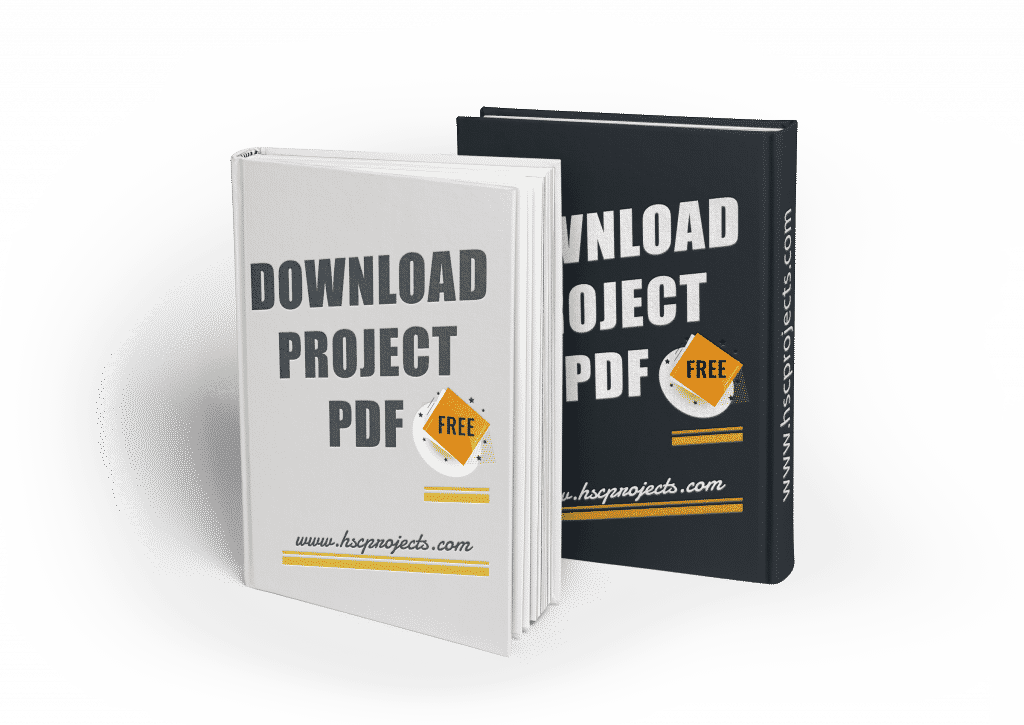
Password: hscprojects.com
In order to download the PDF, You must follow on Youtube. Once done, Click on Submit
Follow On YoutubeSubscribed? Click on Confirm
Download Marketing Management – Washing Powder PDF


